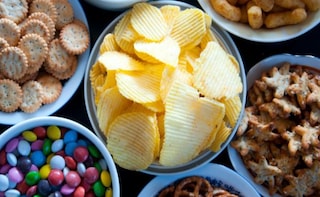There are a lot of things you’ll remember about school: the friends you made, the teacher’s you had and the subjects you took. But the one thing that you’ll remember with most certainty is the food you bought in the school canteen from the leftover change dangling in your pocket. Hot samosas, crispy springrolls, a small though delicious plate of chole bhature and everything you would label as ‘comfort food’. Yes, it’s true that these foods bring back good memories but is this the food you’d want your kids to be eating?
2. Develop a canteen policy to provide wholesome and nutritious food to kid. A sample menu would include things like a panner sandwich, fruit salad, chick pea vegetable, fruit custard, poha, fruit yoghurt, khandavi, whole wheat lathi rolls, vegetable pulao etc.
3. Regulate promotion of HFSS foods among school children
4. FSSAI should consider reviewing the labeling regulations to enable disclosure of all relevant information.
5. Establish stringent limits for unhealthy ingredients.
Advertisement
2. Develop a canteen policy to provide wholesome and nutritious food to kid. A sample menu would include things like a panner sandwich, fruit salad, chick pea vegetable, fruit custard, poha, fruit yoghurt, khandavi, whole wheat lathi rolls, vegetable pulao etc.
3. Regulate promotion of HFSS foods among school children
4. FSSAI should consider reviewing the labeling regulations to enable disclosure of all relevant information.
5. Establish stringent limits for unhealthy ingredients.
For the latest food news, health tips and recipes, like us on Facebook or follow us on Twitter and YouTube.
Advertisement
